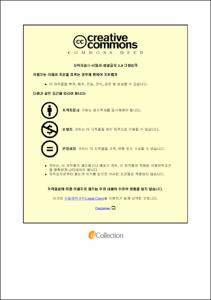Ulsan Univ. Repository
Thesis
General Graduate School
Materials Science & Engineering
1. Theses (Master)
790MPa급 변태유기소성강의 신장플랜지성에 미치는 Al 및 Nb의 영향
- Abstract
- 최근 자동차 산업에서는 탄소배출 감축을 통한 환경 보호와 연비 향상을 위하여 차제에 사용되는 철강소재의 경량화에 대한 연구가 지속적으로 이루어지고 있다. 이에 따라 자동차용 냉연강판의 박육화와 고강도화가 지속되고 있으며, 그에 따라 고강도강의 사용량이 증가하고 있다. 그 중 변태유기소성강은 다른 고강도 강재보다 높은 연신율을 나타내어 냉간 프레스 공법이 적용되는 부품에 널리 사용되고 있다. 하지만 합금원소 첨가를 통한 변태유기소성강의 고강도화가 진행됨에 따라 낮은 성형성에 의해 재료 가장자리 부분에서 균열이 생성되고 전파되는 문제가 보고되고 있어 성형성을 향상시키기 위한 연구가 진행되고 있다. 현재 선행 연구들에 따르면 변태유기소성강의 HER(Hole expansion ratio) 특성은 일반적으로 retained austenite의 안정도, 결정립 크기, morphology에 의해 영향을 받는다고 알려져 있지만, 결과의 단순 비교에 그치고 있는 실정이다. 또한, 변태유기소성강의 합금원소에 따른 미세조직학적 변화에 의한 홀 확장성의 변화에 대한 내용은 보고되고 있지만, 미세조직의 변화로 인해 발생하는 파괴 거동의 변화에 대한 분석과 홀 확장성의 변화에 대한 상관관계 분석이 부족한 실정이기에 이에 대한 연구가 필요하다.
따라서 본 연구의 목표는 HER에 미치는 합금원소의 영향을 알아보기 위해 790MPa급 변태유기소성강의 합금원소(Al, Nb)를 변화시켜, 이에 따른 미세조직 변화가 홀 확장성에 미치는 영향에 대하여 고찰하는 것이다. S steel, SA steel, SAN steel의 서로 다른 합금원소 함량을 가지는 세 강재를 이용하여 실험을 진행하였다. 세 강재 모두 Ferrite, Martensite, Bainite, Retained austenite로 이루어진 조직을 가지고 있었다. 하지만 S steel의 경우 비교적 높은 Martensite분율과 결정립 크기를 가지고 있었고, SA steel의 경우 S steel보다 낮은 Martensite 분율과 작은 결정립 크기를 보였고, SAN steel의 경우 Nb로 인해 Ferrite를 비롯한 모든 상이 미세화 된 것을 확인할 수 있었다. 이러한 합금원소 차이에 의한 미세조직의 변화에 의해 서로 다른 균열 전파 거동을 나타내는 것을 확인할 수 있었다.
Hole expansion test중 조대한 Martensite를 가진 S steel의 경우, Punching 중 Ferrite-Martensite계면에 더 많은 변형이 발생하게 되고 계면 부위에 조대한 공극이 발생하게 되고, 그 숫자도 많았다. 따라서 조대한 공극을 따라 균열이 급격하게 전파되어 직선적인 균열전파경로와 낮은 HER을 나타낸 반면, SA steel의 경우 S steel보다 미세한 Martensite로 인해 Ferrite-Martensite 계면에 가해지는 변형이 적어 상대적으로 크기가 작은 공극이 생성되었고, 이로 인해 좀 더 구불구불한 균열전파경로를 보였으며 HER이 상승하였다. SAN steel의 경우 Nb에 의해 모든 상의 조직이 미세화되었고, 이로 인해 계면에 집적되는 변형이 적어 공극의 크기와 숫자 모두 작았다. 따라서 균열 전파가 가장 구불구불하게 발생하여 가장 높은 HER을 가졌다.|Recently, various advanced high-strength steels are used for the weight reduction in the automobile industry. Among them, transformation induced plasticity (TRIP) steel has received great attention due to its excellent combination of high strength, superior ductility, and good crashworthiness. Although TRIP steel has an excellent stretch-formability and good deep drawability, its stretch-flangeability estimated as hole expansion ratio (HER) is frequently a critical property to avoid fractures in actual parts forming. It is reported that cracks are readily generated and propagated at the edges of the TRIP steel sheets during cold-pressing due to the low stretch-flangeability. It is also known that the stretch-flangeability of TRIP steel is generally affected by several microstructural factors including grain size of the constituent phases and stability of retained austenite. Nevertheless, the effects of alloying elements on the stretch-flangeability of TRIP steel are not clear, and there have been little investigations on this point.
In this study, the effects of the alloying elements (Al, Nb) on the stretch-flangeability of the 790 MPa grade TRIP steel were principally investigated. Three steels were prepared; S steel with Mn and Si, SA steel in which a part of Si was substituted by Al, and SAN steel additionally containing a small amount of Nb. Although the three steels commonly consisted of ferrite, martensite, bainite, and retained austenite, S steel had a higher fraction of martensite compared with SA and SAN steels. The size of martensite was also coarser in S steel. In SAN steel, it was clearly confirmed that the microstructure was considerably refined by Nb addition. Due to these microstructural variations, hole expansion behaviors were significantly different in the three steels. In the case of S steel, plastic deformation was largely concentrated at the ferrite-martensite interface during punching, which produced a number of coarse voids. During subsequent hole expanding, cracks were rapidly propagated along the existing coarse voids, thereby resulting in the lowest HER. In SA steel, on the other hand, less plastic deformation was applied to the ferrite-martensite interface due to the fine martensite structure and crack propagation path was more winding during hole expanding. As a result, enhanced HER could be obtained. In the case of SAN steel, all constituent phases were considerably refined by Nb addition. Accordingly, the plastic deformation accumulated at the ferrite-martensite interface was the smallest and the crack propagation was considerably sluggish during hole expanding. Consequently, SAN steel showed the highest HER. It is also deduced that the high stability of retained austenite contributed to the enhanced HER of SAN steel.
- Issued Date
- 2022
- Awarded Date
- 2022-02
- Type
- dissertation
- Affiliation
- 울산대학교
- Department
- 일반대학원 첨단소재공학과
- Advisor
- 이정구
- Degree
- Master
- Publisher
- 울산대학교 일반대학원 첨단소재공학과
- Language
- kor
- Rights
- 울산대학교 논문은 저작권에 의해 보호 받습니다.
- Appears in Collections:
- Materials Science & Engineering > 1. Theses (Master)
- 파일 목록
-
-
Download
 200000601455.pdf
기타 데이터 / 8.12 MB / Adobe PDF
200000601455.pdf
기타 데이터 / 8.12 MB / Adobe PDF
-
Items in Repository are protected by copyright, with all rights reserved, unless otherwise indicated.